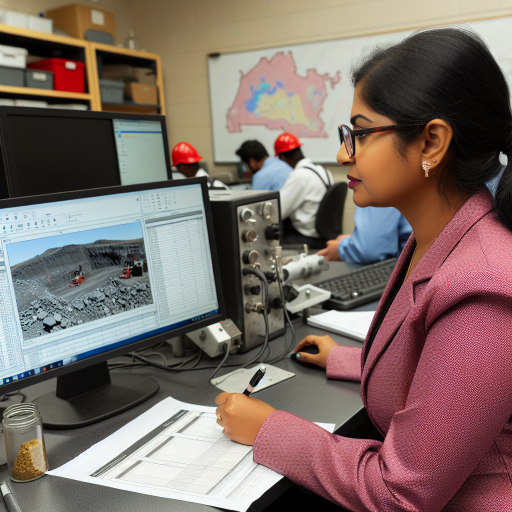Fundamentals of Math in Aerospace
Understanding Basic Principles
Math serves as the foundation of aerospace engineering.
It encompasses various fields, including algebra and calculus.
Each branch contributes uniquely to aerospace applications.
Importance of Algebra
Algebra allows engineers to formulate equations for design problems.
It helps simplify complex relationships between variables.
For instance, engineers use algebra to calculate thrust-to-weight ratios.
The Role of Calculus
Calculus plays a crucial role in analyzing motion and changes.
It enables engineers to understand how variables evolve over time.
Application of derivatives aids in calculating rates of change.
Geometry in Aerospace Design
Geometry is essential for visualizing designs and spatial relationships.
It assists in determining the dimensions of aircraft components.
Engineers often apply geometric principles to optimize shapes for aerodynamics.
Statistics and Probability
Statistics support decision-making under uncertainty.
Engineers analyze data to enhance safety and reliability.
Probability helps assess risks associated with engineering choices.
Integrating Math in Engineering Practice
Mastery of math is critical for successful aerospace engineering.
Engineers use mathematical models to simulate and test designs.
They continuously rely on math throughout the engineering process.
Ultimately, strong math skills lead to innovative aerospace solutions.
Calculus in Aerospace Engineering: Applications in Flight Mechanics
Understanding Flight Dynamics
Flight dynamics involves studying the behavior of aircraft in flight.
Calculus plays a crucial role in analyzing motion and forces.
By using calculus, engineers can model trajectories effectively.
Moreover, they can predict how aircraft respond to various conditions.
This understanding influences aircraft design and performance.
Modeling Aerodynamic Forces
Calculus is essential in calculating aerodynamic forces on an aircraft.
Unlock Your Career Potential
Visualize a clear path to success with our tailored Career Consulting service. Personalized insights in just 1-3 days.
Get StartedThese forces include lift, drag, and thrust, all of which are dynamic.
Using differential equations, engineers analyze how these forces vary.
As a result, they create accurate models for testing and simulation.
This leads to improved designs that enhance performance and safety.
Integrating Motion Equations
Engineering uses calculus to integrate motion equations effectively.
This integration helps to calculate displacement, velocity, and acceleration.
By doing so, engineers can predict an aircraft’s behavior during flight.
Additionally, these calculations assist in optimizing flight paths.
This ultimately contributes to energy efficiency and fuel savings.
Designing Control Systems
Calculus aids in designing control systems for aircraft stability.
Through modeling, engineers develop feedback mechanisms to maintain control.
These systems rely on real-time data for adjustments during flight.
Furthermore, calculus helps in tuning the response of these systems.
This ensures that the aircraft remains responsive and stable.
Simulating Environmental Conditions
Calculus enables engineers to simulate various environmental conditions.
These simulations include turbulence, wind shear, and temperature changes.
Understanding the impact of these conditions is vital for safety.
Using calculus, engineers can refine predictions for aircraft performance.
This proactive approach minimizes risks during flights.
Linear Algebra: Its Role in Structural Analysis and Design
Fundamental Concepts
Linear algebra provides essential tools for aerospace engineers.
It focuses on vector spaces and linear mappings.
These concepts help in analyzing complex structures effectively.
Application in Structural Analysis
In aerospace engineering, structural analysis is crucial.
Engineers use linear algebra to determine stress and strain.
This helps in assessing material behavior under various loads.
Reduction of Complex Systems
Linear algebra simplifies complex equations into manageable forms.
It allows engineers to model real-world scenarios with precision.
Consequently, engineers can solve systems of linear equations efficiently.
Design Optimization
Engineers apply linear algebra for design optimization.
They use matrices to handle large amounts of data.
This process enhances the efficiency of structural designs.
Software and Computational Tools
Many software applications leverage linear algebra for structural analysis.
Popular tools include MATLAB and ANSYS.
These tools enable engineers to perform simulations accurately.
Real-World Examples
The Boeing 787 Dreamliner illustrates the importance of linear algebra.
Engineers calculated optimal structural integrity using matrix methods.
This ensured safety while reducing weight and material costs.
Future Implications
As technology advances, linear algebra remains relevant in aerospace.
It will be key to developing resilient aerospace structures.
Engineers will continue to rely on its principles for innovative designs.
Explore Further: Skills Needed to Succeed in Aerospace Engineering
Statistics and Probability: Importance in Reliability and Risk Assessment
Fundamentals of Statistics in Aerospace Engineering
Statistics plays a crucial role in aerospace engineering.
It helps engineers analyze data from numerous experiments.
Moreover, it guides decision-making processes effectively.
Understanding statistical techniques ensures informed choices.
Assessing Reliability through Statistical Methods
Reliability assessments are vital in aerospace design.
Engineers use statistical methods to predict component lifespan.
They analyze failure rates to enhance design accuracy.
Furthermore, these analyses help identify potential risks.
By employing statistical tools, teams address reliability concerns proactively.
Risk Assessment Using Probability
Probability plays a key role in risk assessment.
Aerospace engineers evaluate potential failures with probability models.
These models quantify the likelihood of various threats.
Consequently, teams prioritize resources and strategies effectively.
Probabilistic analysis ensures safety and reliability in operations.
Application of Statistics and Probability in Projects
Case studies illustrate the importance of statistical analysis.
For instance, the Boeing 737 Max incidents highlighted risks.
Statistical evaluations could have predicted some failures.
Thus, applying statistics can lead to safer designs.
Additionally, continuous data analysis enhances overall project success.
Future Trends in Statistical Applications
New technologies will advance statistical methods further.
Machine learning can analyze vast data sets efficiently.
This advancement will enhance predictive capabilities significantly.
Ultimately, improved reliability and safety will result.
The aerospace industry must embrace these emerging techniques.
Find Out More: Metallurgical Engineering Salary Insights in Canada
Differential Equations: Modeling Dynamic Systems in Aerospace
Understanding Differential Equations
Differential equations are essential tools in aerospace engineering.
They describe how systems change over time.
This branch of mathematics models motion and forces effectively.
The Role of Dynamics in Aerospace
Dynamic systems exhibit behavior that varies with time.
Aerospace vehicles must navigate these changing conditions.
Consequently, engineers use differential equations to predict outcomes.
Moreover, these equations help design more efficient aircraft.
Key Applications of Differential Equations
- Modeling flight dynamics ensures stability during flight.
- Predicting vehicle acceleration and deceleration are crucial for safety.
- Simulating turbulent airflow around wings leads to better designs.
Real-World Examples
A good example is the analysis of space vehicle trajectories.
In this case, engineers use differential equations to calculate orbits.
Similarly, simulating ballistic missile paths requires precise calculations.
Additionally, designing launch systems relies heavily on these models.
Challenges and Solutions
Working with differential equations presents challenges.
Non-linear differential equations can be particularly complex.
However, numerical methods and computational tools can simplify these tasks.
Also, software like MATLAB is frequently used in aerospace applications.
Explore Further: Biomedical Engineer Roles in the Healthcare Industry

Numerical Methods: Solving Complex Aerospace Problems
Introduction to Numerical Methods
Numerical methods provide essential tools for solving complex aerospace problems.
These methods allow engineers to obtain approximate solutions.
They are particularly useful when analytical solutions are difficult or impossible.
Applications of Numerical Methods in Aerospace Engineering
Aerospace engineers apply numerical methods in various areas.
They use these techniques for fluid dynamics simulations.
These simulations help in understanding airflow around an aircraft.
Engineers also utilize numerical methods in structural analysis.
This analysis ensures the integrity of aircraft components under stress.
Finite Element Method
The finite element method (FEM) is a widely-used numerical technique.
It breaks down complex structures into smaller, manageable components.
This approach allows for detailed stress and strain analysis.
FEM is crucial for design optimization in aerospace projects.
Computational Fluid Dynamics
Computational fluid dynamics (CFD) plays a significant role in aerospace engineering.
CFD helps predict aerodynamic performance through simulations.
It allows engineers to visualize airflow patterns around aircraft surfaces.
Consequently, engineers can improve designs for fuel efficiency and stability.
Challenges in Implementing Numerical Methods
Implementing numerical methods presents certain challenges.
One challenge is ensuring numerical stability and accuracy.
Furthermore, engineers must choose appropriate algorithms for specific problems.
Finally, interpreting the results requires a solid mathematical foundation.
Future Trends in Numerical Methods
As technology advances, numerical methods will continue evolving.
Machine learning will enhance predictive capabilities in simulations.
In addition, researchers aim to develop more efficient algorithms.
These advancements will streamline aerospace engineering processes.
You Might Also Like: Top Universities for Aerospace Engineering Studies
Geometry and Trigonometry: Their Significance in Navigation and Control
Fundamentals of Geometry
Geometry forms the backbone of aerospace engineering.
Engineers use it to design aircraft shapes and structures.
Accurate geometric principles ensure aerodynamics are optimized.
These principles help in understanding spatial relationships.
Role of Trigonometry in Flight Mechanics
Trigonometry is critical for navigating airspace.
Pilots and engineers use it to calculate angles and distances.
This calculation allows for precise flight path planning.
Moreover, it aids in understanding forces acting on the aircraft.
Applications in Navigation
Navigation systems rely heavily on geometric calculations.
GPS technology utilizes these concepts for accurate positioning.
Moreover, charts and maps incorporate geometric data for clarity.
Subsequently, pilots can make informed decisions during flight.
Impact on Control Systems
Control systems depend on mathematical modeling of aircraft dynamics.
Engineers apply trigonometric functions to analyze stability and control.
For instance, feedback loops use these principles for optimal performance.
Consequently, aircraft can efficiently respond to pilot inputs.
Integration in Software Development
Software tools for aerospace rely on geometry and trigonometry.
Simulations use these mathematical principles to mimic real-world scenarios.
As a result, engineers can predict performance under various conditions.
This integration enhances the reliability of modern aerospace systems.
The Relationship Between Math and Computer-Aided Design in Aerospace Engineering
Significance of Mathematics in Design
Mathematics plays a crucial role in aerospace design processes.
Engineers rely on mathematical models to simulate complex flight dynamics.
They utilize these models to predict aircraft performance before physical testing.
Furthermore, equations help in optimizing design for efficiency and safety.
Mathematical Principles in CAD Software
Computer-Aided Design (CAD) software integrates various mathematical principles.
Primarily, geometry underpins the creation of 3D models in aerospace engineering.
Engineers apply algebraic equations to define curves and surfaces accurately.
Calculus assists in determining rates of change, such as velocity and acceleration.
Collaboration Between Mathematicians and Engineers
Aerospace projects often see collaboration among mathematicians and engineers.
Mathematicians contribute advanced algorithms for simulation and analysis.
In this partnership, they develop new mathematical theories applicable to aerospace challenges.
Moreover, teamwork enhances the accuracy of predictions in CAD applications.
Real-World Applications
In practice, mathematical models guide the design of various aircraft systems.
For example, aerodynamics relies on fluid dynamics equations for performance improvement.
Additionally, structural analysis involves calculating stress and strain on materials.
These applications illustrate the profound interdependence between math and design.




